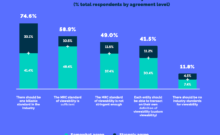Original Article: www.secureworldexpo.com
Every now and again in the cybersecurity world, an unprecedented attack happens that either causes massive damage and sends people scrambling or unites an entire community to fight back. Then there was Methbot, a sophisticated digital advertising ring that not only took money out of the pockets of advertisers and publishers alike, but also caused a swift and decisive retaliation. Although this story could’ve ended with the typical post-attack damage control, it instead turned into a galvanizing event for the digital-advertising industry that could prove to prevent similar attacks in the future.
How digital ad fraud works
Digital advertising fraud is nothing new. In fact, Michela Menting, research director at ABI Research, says ad fraud is “a particularly lucrative operation because the online advertising market is so highly profitable.” Online advertising is handled through a process called programmatic ad buying, where a website essentially auctions off open ad slots to the highest bidder. Once the transaction is complete, the ad shows up on the website in the specified slots and in front of the eyes of visitors.
[…READ MORE AT: Original Article: www.secureworldexpo.com]








